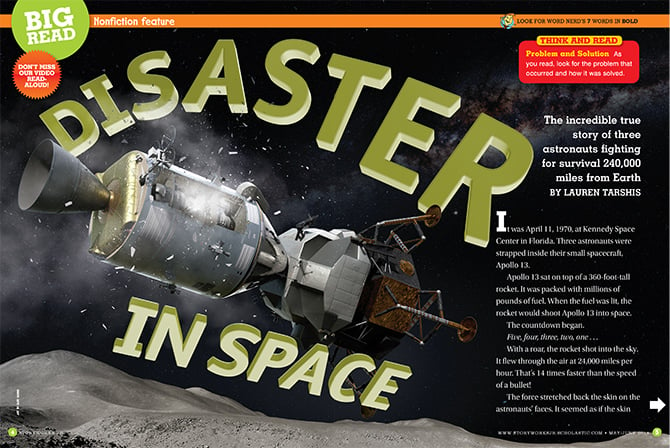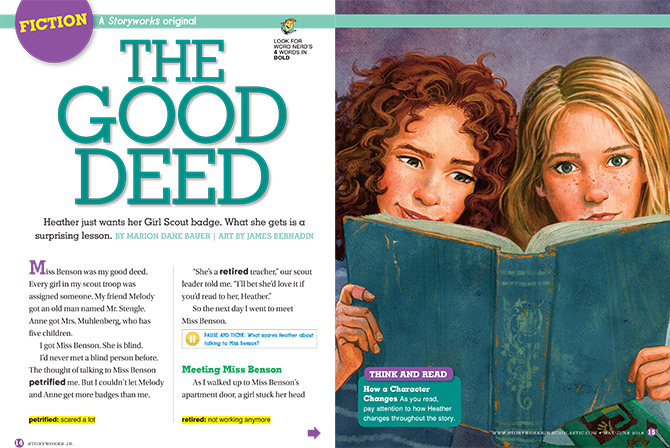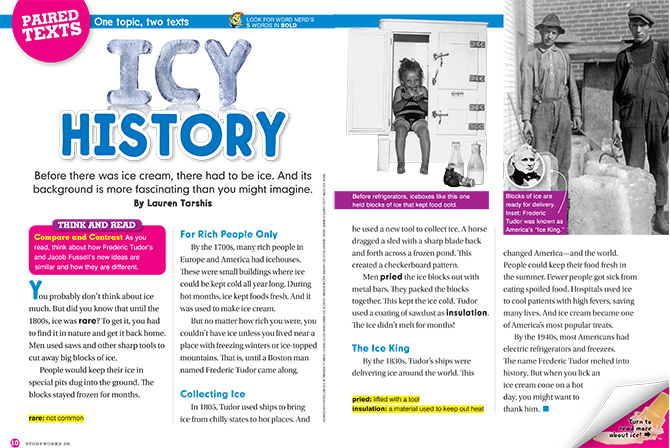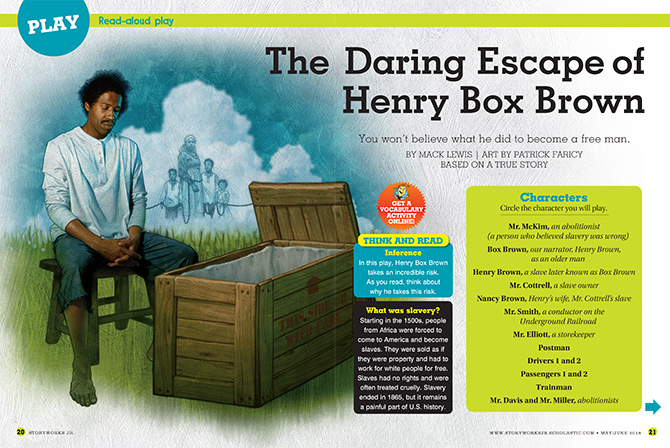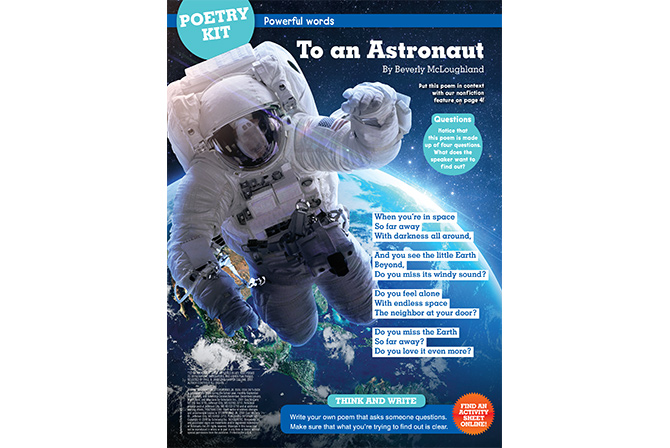Not Very Diverse
For further context, explain to students that in the time of Apollo 13, astronauts were exclusively white men. Towards the end of the 1970s, people of color and women started to join NASA.
Hidden Figures
Along these lines, read aloud Hidden Figures: The True Story of Four Black Women and the Space Race, the kids’ version of the story about the women who played an integral role in NASA’s history.
We Love Tod!
Our contest prize is a book by Tod Olson called Lost in Outer Space. Tod is a writer for Storyworks Jr. Check out his story “Volcano of Doom” in our March/April issue—and have your students practice their writing by entering our contest!
Animals in Space
Do your students know that many animals—including mice and monkeys—have been launched into space? Show them this infographic!
Change of Perspective
To see the world from an astronaut’s point of view, check out these beautiful photos from astronaut Scott Kelly.
Headquarters All Over
The space center in Houston is just one of several NASA space centers and research facilities throughout the U.S. Show your students this map, which links to sites for each facility.



